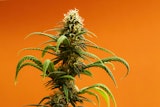
Irrigation and fertigation play a pivotal role in the health and productivity of cannabis plants. Ensuring the right amount of water and nutrients reaches the plants is essential for optimal growth.
With the integration of IoT devices in modern cultivation, we're now equipped to monitor these elements with precision, adjusting strategies in real-time based on the plant's needs.
Water is the lifeblood of plants, and nutrients are their food. Together, they support various cellular processes, ensuring robust growth and health. Furthermore, the precision in water and nutrient delivery can directly impact the yield and quality of the cannabis.
Over-watering can lead to root rot and other diseases, while under-watering can stress the plant. Similarly, incorrect nutrient doses can cause nutrient burns or deficiencies.
What Are We Monitoring?
Telemetry Types:
- Moisture Levels: Measures the moisture content in the soil or growing medium.
- Example Value: 60% moisture content.
- Nutrient Concentration: Monitors the amount of specific nutrients in the water.
- Example Value: 900 PPM.
- How This Telemetry is Represented: Data from sensors is typically plotted over time, showcasing trends in moisture levels and nutrient concentrations. This can be viewed on dashboards with visual aids like graphs and charts.

Devices for Monitoring Irrigation and Fertigation
- Soil Moisture Sensors: These sensors, when placed in the soil, provide real-time data on the moisture levels, ensuring plants are neither over-watered nor under-watered.
- Nutrient Analyzers: Devices that continuously check the nutrient concentrations in the water, ensuring the plants get a balanced diet.
- IoT-Connected Drip Systems: These systems provide water and nutrients directly to the plant roots, adjusting in real-time based on sensor feedback.
Interpreting Data
- Understanding the Ideal Range: For most cannabis plants, maintaining a soil moisture level between 50-70% is considered ideal. Nutrient concentration would vary based on the growth stage, but a general range might be 500-1100 PPM.
- Recognizing Outliers: A sudden drop in moisture could indicate a system leak or blockage. A spike in nutrient concentration might mean a dosing error.
Testing & Calibration
- The Importance of Accuracy: Ensuring that sensors provide accurate readings is crucial as decisions are based on this data.
- Testing Procedures: Use lab-grade equipment or reference solutions to cross-check the accuracy of your sensors periodically.
- Calibration Steps: Use standard calibration solutions to recalibrate moisture and nutrient sensors. This ensures they continue to provide precise readings.
Using Data for Cultivation Decisions
- Adjusting Irrigation and Fertigation Schedules: If moisture levels consistently read low, you might decide to increase watering frequency. Similarly, if nutrient concentrations are off, you can adjust the dosing.
- Incorporating Other Data: It's essential to consider moisture and nutrient data alongside other pillars like lighting and temperature. They all interact, influencing plant health and growth.
- Long-term Planning: Historical data on irrigation and fertigation can guide future cultivation strategies, refining water and nutrient delivery for optimal results.
Monitoring irrigation and fertigation is a game-changer in cannabis cultivation. The precision and real-time feedback provided by IoT devices mean plants get exactly what they need when they need it. Embracing this technology ensures better plant health, higher yields, and consistent quality, setting the stage for successful cultivation.
This article is part nine of an exclusive new series that will guide you through the essence of each of the fourteen pillars of plant care, focusing on indoor growth and revealing the nuances of how IoT can be a game-changer for cultivators.
Shawn Deggans owns Green Nanny, an IoT, AI and data consulting company focused on helping growers spend more time in the garden and less time struggling with technology.























